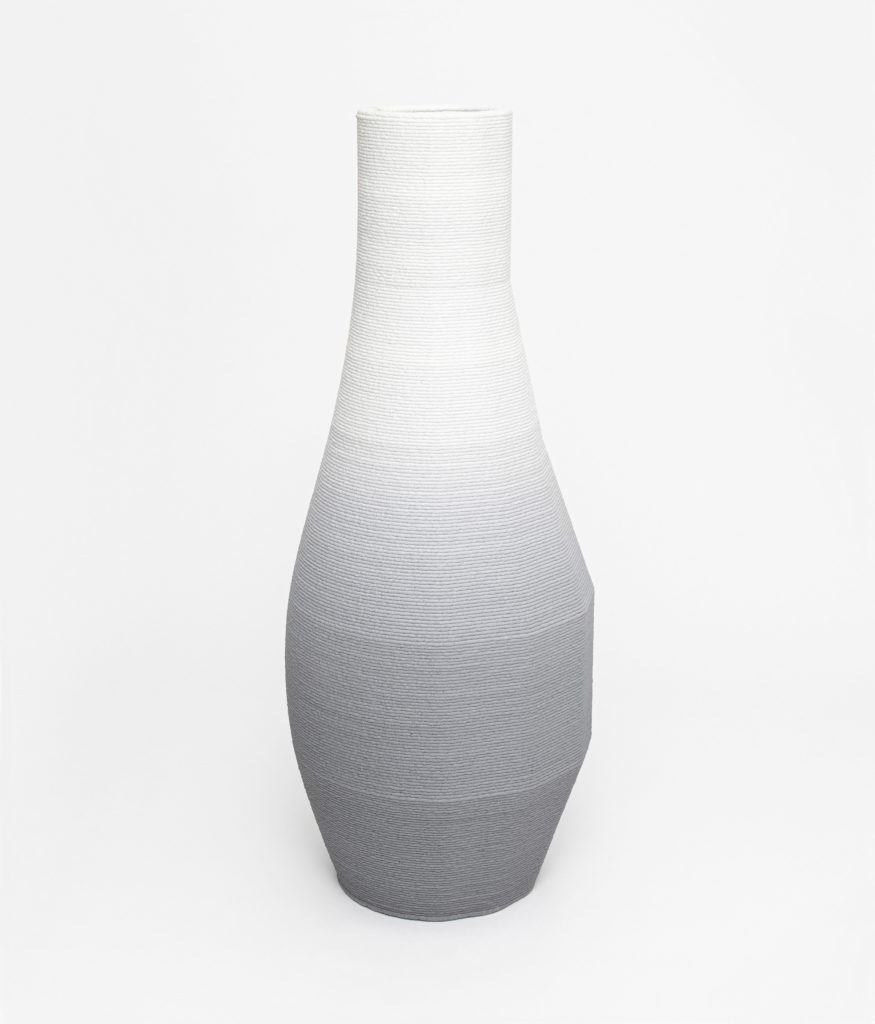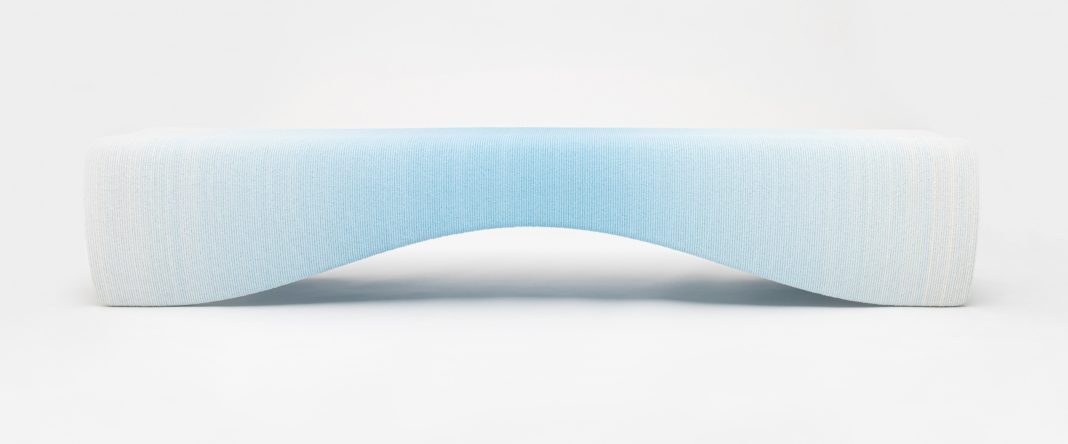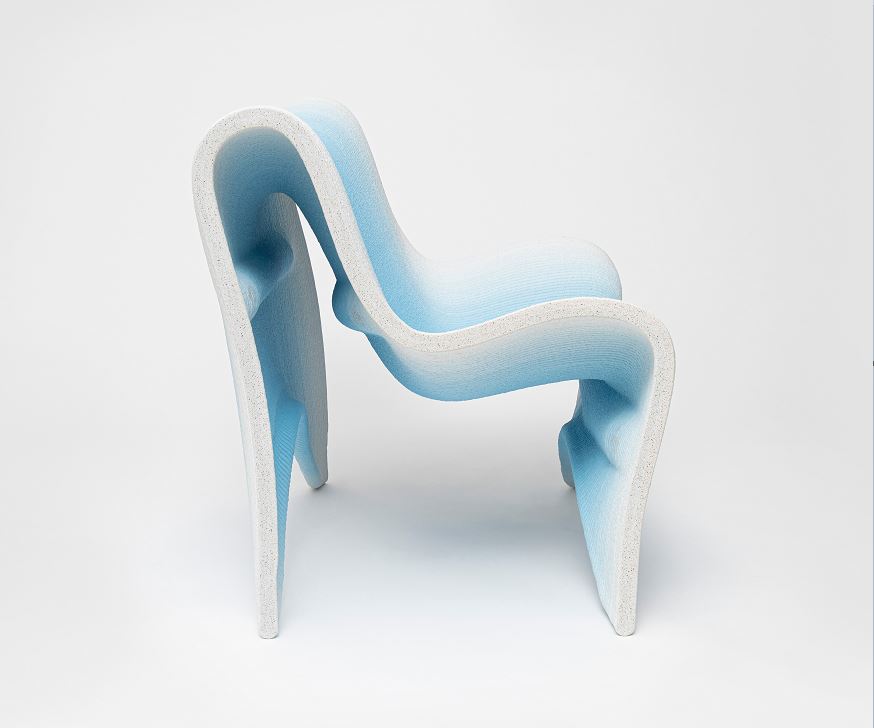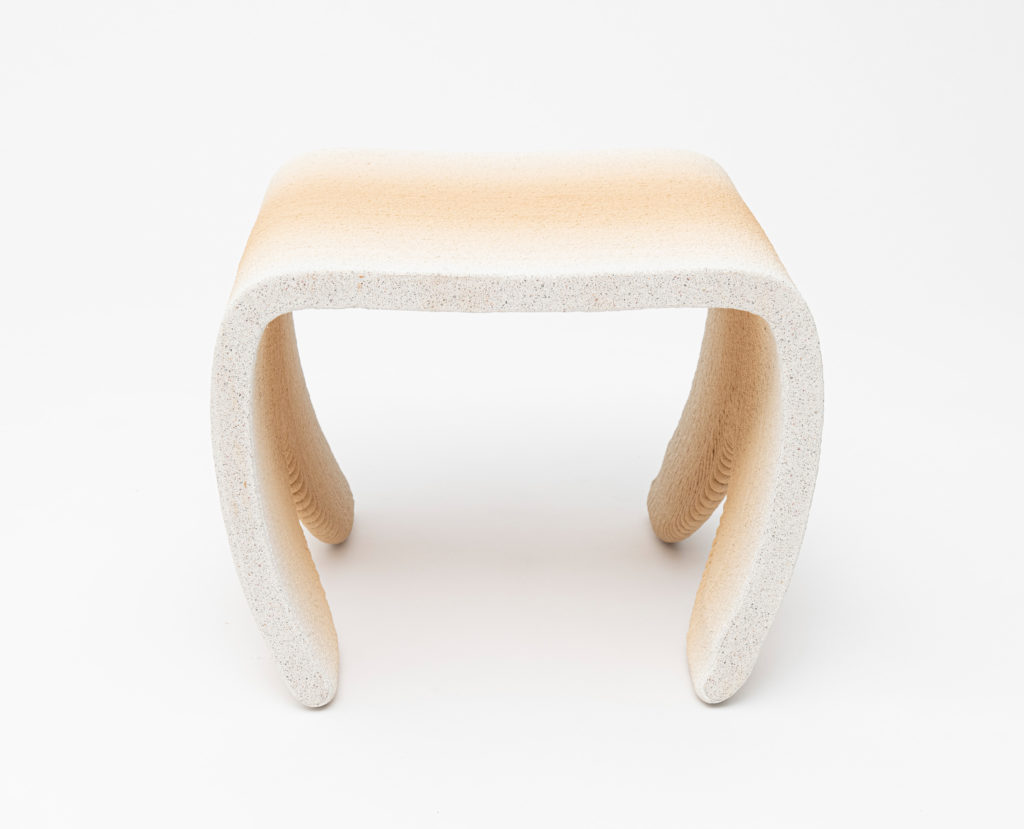Designer Philipp Aduatz has unveiled the latest project he achieved in collaboration with the Austrian manufacturer incremental3d: a 3D printed gradient furniture collection.
This collection does not mark the first collaboration between both parties as we first discovered what they were capable to do with this 3D printed concrete chair.
3D concrete printing remains at the heart of this project. This technique is acknowledged for the ecological, aesthetics and economic benefits it delivers as well as the lack of moulds at the production level.
This time,incremental3d has been exploring the dyeing of concrete as part of a research project. The process consists in applying dye during the printing process directly into the nozzle and therefore reduce workload, waste and time delay.
This allows for a coloured design in concrete applied locally point by point and not globally, as it used to be.
One of the challenges the team encountered during the product development was the development of a suitable reinforcement technology to provide the load capacity for the design language.
The truth is, concrete is by its nature a material with very little tensile strength; hence the need to reinforce it. In this case, a customized semi-automatic strategy was developed. Furthermore, the required payloads had been calculated, tested and proved by the high performance of steel. This was visually perfectly integrated into the design.
By working together, Incremental3d and Philipp Aduatz have developed a new collection of benches, a chair and a large vase.
By the application of a gradient and the exploration of possible shapes through an interactive working method, they developed an approach to exercise the design process throughout 3D concrete printing.

Speaking of the gradient, Philipp Aduatz comments: “for many years, I have been obsessed by the concept of a gradient which reflects elegance and harmony to me. I believe that the gradient is, in regards to the perception of the environment and its digital reflection, a fundamental design principle. It has a mathematical aesthetic and precision that I have always been admiring. With this project I want to combine the design of the gradient with different functional objects by the use of innovative fabrication technologies.”
Remember, you can post job opportunities in the AM Industry on 3D ADEPT Media free of charge or look for a job via our job board. Make sure to follow us on our social networks and subscribe to our weekly newsletter : Facebook, Twitter, LinkedIn & Instagram ! If you want to be featured in the next issue of our digital magazine or if you hear a story that needs to be heard, make sure you send it to contact@3dadept.com








